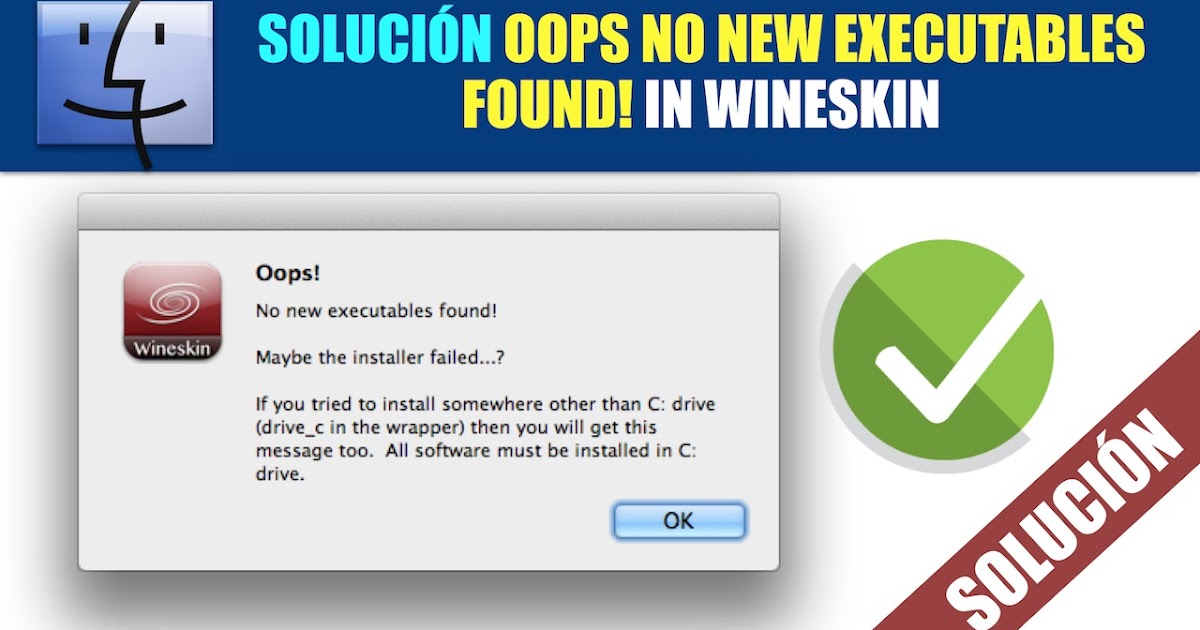
How to Install Wine on Mac OS Mojave. You can use Wine to run Windows programs on your Mac because this is both free and specific. There are other programs that allow you to run Windows applications on macOS. Now, you should be able to right click the game's app, select Show Package Contents and run Wineskin.app. If the Wineskin.app is not there go to Contents Resources game, right-click the game's app select Show Package Contents and open Wineskin.app. In the Advanced options, change the engine to the one you have downloaded.
Wineskin is a free, open-source application that lets you port Windows applications to OS X without requiring you to own a copy of Windows. I'm using a MacBook Pro with OS X 10.11.6 (El Capitan) and I downloaded the Windows installer version of key73d.These are the steps that I took (hopefully I remembered them all):
- With the Wineskin Winery application, I created a blank 'wrapper' (an application package where KeyKit would be installed) which I named 'KeyKit.' This was automatically created in the Applications > Wineskin directory under my user directory, but I just moved it to the main Applications directory.
- Double clicking on KeyKit then opened the Wineskin application hidden inside the package. From the small Wineskin window that opened up I selected Advanced, then the Options tab, then checked 'Emulate three button mouse...' which turned out to be necessary in order to be able to use the trackpad's right mouse button equivalent inside of KeyKit.
- From there I clicked on Install Software then selected the key73d.exe file I had downloaded. This ran the windows installer for KeyKit and created the whole directory structure inside of the application package. There was one error message that came up during the installation which didn't seem to cause any problems.
- Once that was completed, clicking on KeyKit now opens KeyKit within an X11 window (a special version -- WineskinX11 -- that is built in).
 Opening the file browser within KeyKit shows a Windows-style directory. Opening My Computer shows you a C: drive, which is the Windows C: drive hidden inside of the application package, and a Z: drive, which is the Mac's root directory. Opening My Documents shows you the Mac Documents folder within your user directory.
Opening the file browser within KeyKit shows a Windows-style directory. Opening My Computer shows you a C: drive, which is the Windows C: drive hidden inside of the application package, and a Z: drive, which is the Mac's root directory. Opening My Documents shows you the Mac Documents folder within your user directory.
Wineskin Mac 10.15
From the Mac finder, you can access all of the KeyKit files such as the documentation and the library by right-clicking on KeyKit and selecting Show Package Contents. There's a alias for drive_C that leads to the virtual C: drive which includes the KeyKit7.3d folder. I created a keylocal.k at the root of that C: drive which includes the lines: inport('Bus 1') & outport('Bus 1'). This successfully makes KeyKit default to the IAC driver for MIDI input & output. While you're inside the package you could create an alias so you can more directly access the KeyKit folder the next time.Wineskin Download Mac
 I just installed this last night, but so far, so good. I occasionally get weird errors in KeyKit, but probably fewer than I did when I was running the Mac version on an older Mac.
I just installed this last night, but so far, so good. I occasionally get weird errors in KeyKit, but probably fewer than I did when I was running the Mac version on an older Mac. Wineskin Winery Mac
